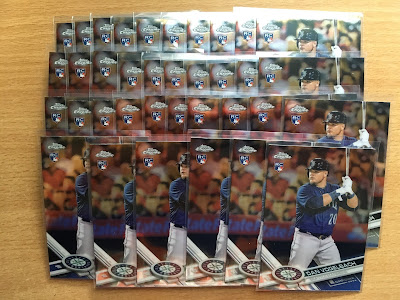Author: Sadaharu Oh and David Falkner
Genre: Autobiographical
Ease of Reading: Small margins and what seems to be 11-point font initially made this 279 page book a little more intimidating to me than what it should have been. There's a four page glossary, eleven page appendix and two pages of stats at the end of the book. Plus, there's sixteen pages of pictures in the middle of the book. In total, that cuts it down to only about 246 pages about one of the greatest baseball players ever not to play in Major League Baseball. It took me only about five days to knock this book out, but I was reading large chunks at a time hoping to find some Zen-like tips to help me get through the new school year. LOL
 Synapse: The book starts with Oh's early sandlot days and how he was recruited to play at the Waseda baseball school. His dad didn't want Oh to play baseball, but he finally relented and actually wound up supporting him and providing medical aid during a pivotal time in his young career. There was no draft in the Japan Central League, which I found to be very interesting, and Oh was signed by the Yomiuri Giants. He struggled mightily early in his career, especially considering the expectations the Giants placed on him from the onset. He found his way with his hitting instructor, Arakawa-san, and the two of them put in many long days and nights of baseball and martial arts before Sadaharu Oh finally was pressured into trying his famous one-legged "flamingo" hitting stance during a game. The new stance required immense balance, but it also helped rid Oh of a hitch in his swing which didn't allow him to reach his perceived potential. The rest of the book talks about his relationships with the press, his teammates, the fans, and his chasing Babe Ruth and then Hank Aaron.
Synapse: The book starts with Oh's early sandlot days and how he was recruited to play at the Waseda baseball school. His dad didn't want Oh to play baseball, but he finally relented and actually wound up supporting him and providing medical aid during a pivotal time in his young career. There was no draft in the Japan Central League, which I found to be very interesting, and Oh was signed by the Yomiuri Giants. He struggled mightily early in his career, especially considering the expectations the Giants placed on him from the onset. He found his way with his hitting instructor, Arakawa-san, and the two of them put in many long days and nights of baseball and martial arts before Sadaharu Oh finally was pressured into trying his famous one-legged "flamingo" hitting stance during a game. The new stance required immense balance, but it also helped rid Oh of a hitch in his swing which didn't allow him to reach his perceived potential. The rest of the book talks about his relationships with the press, his teammates, the fans, and his chasing Babe Ruth and then Hank Aaron. Comments: I've always been intrigued by baseball leagues in foreign lands and the Nippon Professional Baseball League would be the biggest and most popular not directly tied with Major League Baseball. I was hoping to learn a lot more about Japanese baseball, but I was only able to glean some things here and there from the text about how things were back in the 1960s and 1970s. This book is an autobiography, not a history of Japanese baseball, so I guess I shouldn't be too disappointed. Nevertheless, it was a fun read and I learned much about the all-time home run king. For instance, here's an interesting paragraph from the book:
The press has told stories about how, when I had a bad year, I voluntarily went into the front office and asked for a pay cut! Well, not quite. I never asked to have my salary reduced. If I had a bad year, I took the attitude that I didn't deserve more for the following year, and I also took the position that I didn't want multiple-year contracts -- not for any selfless wish to deprive myself but because I believe that making things too comfortable takes away the challenge. And everything I do, including salary talks, has only one goal - to keep my mind focused on the challenge.The "challenge" at first was becoming the best hitter he could be, but Arakawa-san set the goal from very early in Oh's career for him to top Babe Ruth's home run record. Eventually, Oh saw in himself what his mentor and hitting instructor did and the "challenge" soon changed to becoming the all-time home run king. Sadaharu Oh was a very driven man to say the least.
Grade: I genuinely enjoyed reading this book. It was a nice way to cap-off my summer and I'd like to thank my first cousin Mark for gifting me the book. I give this book an 'A-' overall, and I would highly recommend it to anyone who enjoys autobiographies or someone looking to learn more about Sadaharu Oh and his baseball career.
I'd be happy to pass my copy along if you're interested. Just let me know in the comments!





















